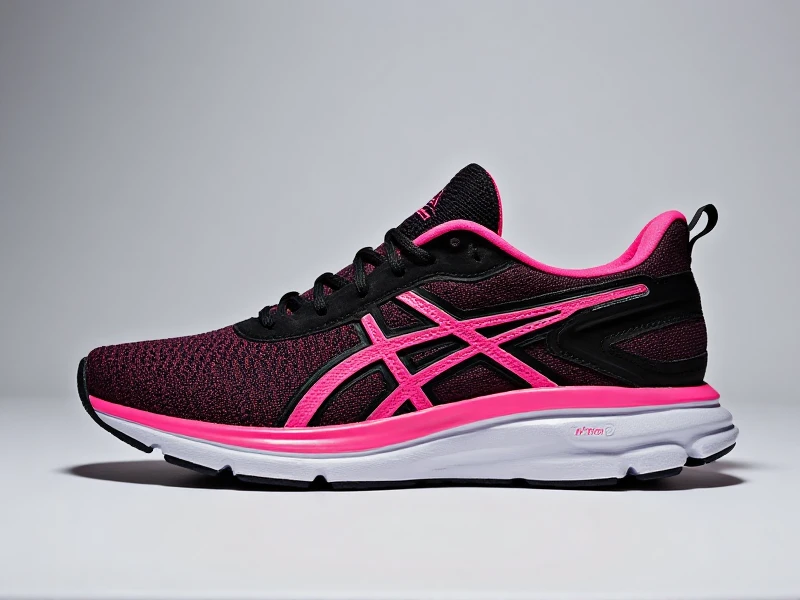The Ultimate Guide to Choosing the Best Women's Running Shoes for Every Runner
2025-06-01

SEO Article on Women's Running Shoes
Finding the perfect pair of women's running shoes can transform your running experience, making every stride more comfortable and efficient. Whether you're a beginner pounding the pavement or a seasoned marathoner tackling trails, the right footwear is essential. Women's running shoes are designed specifically for female feet, which often have narrower heels, higher arches, and a different weight distribution compared to men's. Investing in high-quality women's running shoes not only enhances performance but also reduces the risk of injuries like shin splints or plantar fasciitis. In this guide, we'll dive into what makes women's running shoes stand out, key features to look for, and tips for selecting the ideal pair to keep you moving smoothly.
Why Women's Running Shoes Matter
Women's running shoes aren't just a marketing gimmick—they're engineered for the unique anatomy of female feet. Research shows that women typically have a smaller frame and lower center of gravity, leading to different movement patterns during running. Shoes tailored for women address these nuances with narrower fits in the heel and midfoot, plus lighter materials to match a woman's average weight. This design prevents common issues like blisters or instability, ensuring a snug yet flexible feel. For instance, popular models from brands like Nike and Brooks incorporate gender-specific cushioning that adapts to softer landings, crucial for preventing joint stress. If you're a woman hitting the trails or roads, prioritizing specialized women's running shoes is key for long-term comfort and injury prevention. Plus, with trends like sustainable fabrics gaining traction, modern options are eco-friendly without sacrificing durability.
Key Features to Look For in Top Women's Running Shoes
When shopping for women's running shoes, focus on three core elements: cushioning, support, and fit. Cushioning absorbs impact—look for shoes with responsive midsoles using tech like EVA foam or gel inserts. This reduces fatigue on hard surfaces, ideal for daily jogs. Support is vital for stability; options like motion-control shoes with sturdy arches help overpronators avoid ankle rolls, while neutral shoes suit supinators. Always check the heel-to-toe drop (usually 8-12mm for women's running shoes) to match your gait. Fit-wise, measure your feet later in the day when they're swollen, and leave a thumb's width of space at the toes. Breathable mesh uppers and reflective details add safety and comfort for low-light runs. Brands like Asics and New Balance excel here, offering wide or narrow width options to cater to all foot shapes. Don't forget durability—outsoles with rubber treads handle diverse terrains, extending shoe life to around 300-500 miles.
Types and Trends in Women's Running Shoes
Women's running shoes come in various styles to suit different activities. Road running shoes like the Brooks Ghost focus on lightweight cushioning for asphalt, while trail running shoes like Salomon models have aggressive treads and waterproofing for rugged paths. Minimalist shoes offer a barefoot feel for short sprints, promoting natural form, and max-cushion shoes like Hoka One One provide extra padding for long distances. Lately, innovations like knit textiles reduce waste and boost breathability, and smart shoes with embedded trackers monitor cadence or distance. Climate-conscious options use recycled plastics, appealing to eco-minded runners—Adidas' Parley line is a prime example. Seasonal trends also play a role; spring lines often feature vibrant colors or reflective accents for visibility in morning runs. To choose based on running type, assess your routine: opt for stability-focused women's running shoes if you do high-mileage road training, or flexible trail versions for off-road adventures.
Practical Tips for Selecting Your Ideal Pair
Choosing women's running shoes involves personal factors. Start by identifying your foot type—flat arches may need more support, while high arches benefit from ample cushioning. Visit a specialty store for a gait analysis to pinpoint pronation issues. Try shoes on in the afternoon with running socks and walk or jog around the store to test comfort. Rotate between multiple pairs to extend their lifespan; this balances wear patterns. Replace old shoes every 6-12 months or 300-500 miles, as worn-out cushioning loses its shock absorption. On a budget? Look for last-season models during sales—they offer similar tech at reduced prices. For beginners, start with versatile, neutral women's running shoes to ease into the sport. Remember, comfort is king: if shoes don't feel perfect out of the box, they likely won’t improve over time. Many runners swear by the "10-minute rule"—if you can't stand the fit after ten minutes, swap sizes.
In summary, women's running shoes are a game-changer for female athletes, blending anatomical design with advanced tech for peak performance. By prioritizing cushioning, support, and proper fit, you can find a pair that fuels your runs without discomfort. As trends evolve toward sustainability and smart features, there's never been a better time to upgrade your gear. Whether you're chasing a PR or enjoying a casual jog, investing in quality women's running shoes keeps every step rewarding and injury-free. Ready to lace up? Explore trusted reviews and expert fitting services to start your next running journey on the right foot. After all, your feet deserve the best—they carry you through every mile. (Word count: 845)
Category: